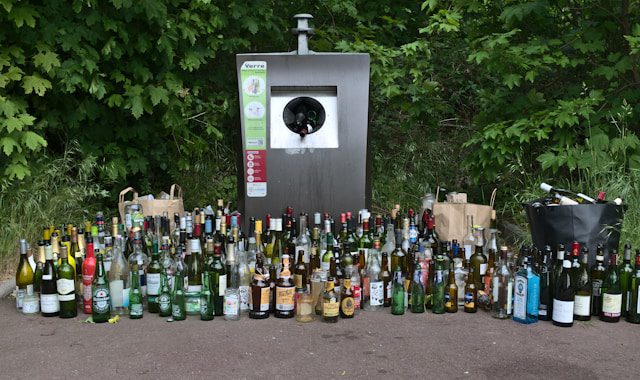Liz Sagues summarises the learnings and challenges presented in the recent Let’s talk about… webinar, featuring three members of Porto Protocol — Diana Snowden Seysses, Marta Mendonça and Muriel Chatel, and moderated by L.M. Archer.
Is it idealistic fantasy that the wine bottle you’re pouring from now could, over months or years to come, be refilled again and again rather than ending up in a recycling bin or, worse, landfill? No. Bottle reuse is possible, and increasing initiatives worldwide are the proof.
That was the clear message from the second of this year’s important CWW Let’s talk about… sessions discussing how the largest element in wine’s carbon footprint — the production and transport of bottles — could be reduced. And it came from people who are involved in making bottle reuse a practical addition to other carbon-cutting action, notably lighter bottles, bulk import, glass furnace improvement and alternative packaging.
Think back to last year’s London Wine Fair, when some 20,000 empties were collected in an exercise to assess reuse potential. More than 1,000 of them were analysed in detail and the results were revealed at the Circle webinar on April 23rd, when a panel from Porto Protocol — organisers of the collection and the largest global wine community encouraging sustainability — explained just how crucial reuse could be in helping to reduce the near-20 billion kilos of CO2 released in the making of 32 billion new wine bottles each year.
Marta Mendonça, Porto Protocol manager and head of impact, offered more statistics: that reusing a bottle 20 times brings an 80% cut in its carbon emissions, to a total much less than PET bottles or cans, and that savings of more than 95% each have been made on energy use, CO2 emissions and mineral raw material in the decade-long Styria bottle reuse scheme.
The London Wine Fair experience was detailed by reuse pioneer Muriel Chatel, whose Sustainable Wine Services provides a deliver-collect-repeat service to restaurants in London, a circular operation where low-intervention wines are imported in 1,000 litre containers, transferred into bottles or refillable kegs, delivered to clients whose empties collected at the same time, ready to repeat the cycle.
“For me, all bottles are reusable,” she argued. Though the LWF audit showed 95% of bottles were technically different, those differences were mostly tiny and were generally not a deliberate choice of winemakers. Label removal could be a problem, Muriel accepted, but if 80% of the LWF bottle labels could be taken off with less-than-optimal equipment, better technology should solve that.
It was essential, she said, that there should be collaboration in the wine industry, for producers to be empowered to make informed sustainable choices and for consumers to accept reuse. An international ReuseReady charter will focus the ideas – there will be a roundtable session on it as it launches at this year’s London Wine Fair.
Her own initiative, she emphasised, works. “As soon as people try it they embrace it entirely.” But to succeed widely there must be a move away from short-term ideas to ‘system thinking’. “We must choose solutions today that won’t present problems tomorrow.”
Diana Snowdon Seysses put forward the producer viewpoint, from her work at Domaine Dujac in Burgundy; Snowden Vineyards and Ashes & Diamonds in Napa; and Domaine de Triennes in Provence. “Bottle reuse is so blindingly obvious.” Most of her wines are intended to be kept for a minimum of a year, so glass bottles are essential — and she has proved that comparatively lightweight (450 gram) bottles withstand reuse at least 15 times. Also, she has successfully trialled water-soluble labels.
Setting industry-standard heights for the major bottle shapes was “the only thing needed for bottle lines”, she continued. Such standardisation had long been agreed for bottle openings, so a clear precedent existed.
Despite their passion for bottle reuse, the presenters were realistic in their hopes. “We do not have all the answers,” said Marta. “But people are now talking.” She instanced government support, by France particularly, alongside a major project in Spain by Torres and Gonzalez Byass and many other efforts all round the world. “We are still finding the best solutions.”
One particularly pertinent question came in the following discussion – how could individuals help promote bottle reuse? It was hard, was the consensus, but raising the subject when buying wine could be valuable. And Circle members are in a perfect position to spread the message widely.
The Circle’s thanks go to member L.M. Archer, who focuses on sustainability in her writing, for bringing together the panel and moderating the session. For more information see www.portoprotocol.com. The link to the recording of the session will be available soon in the members’ section of the Circle website.

